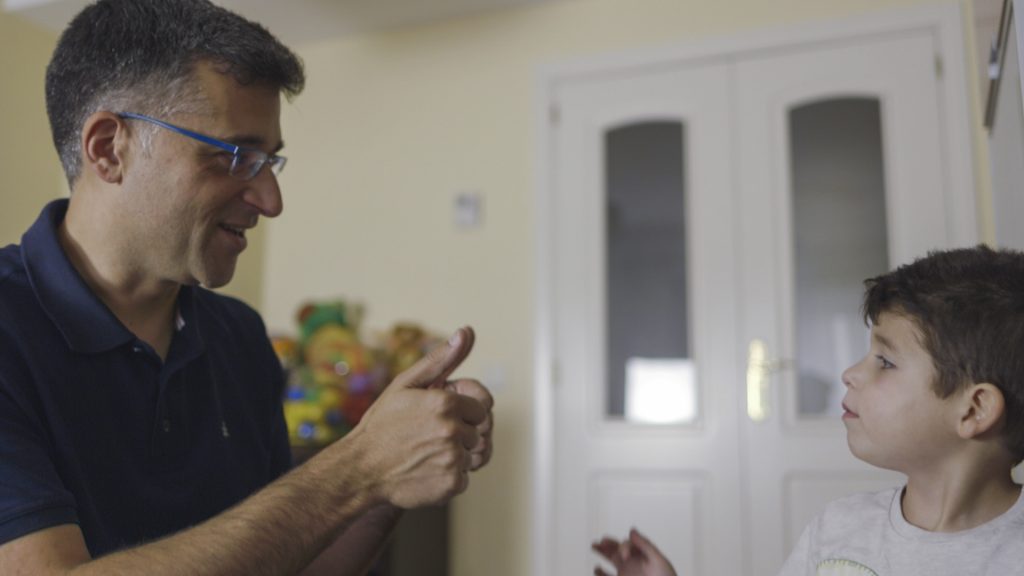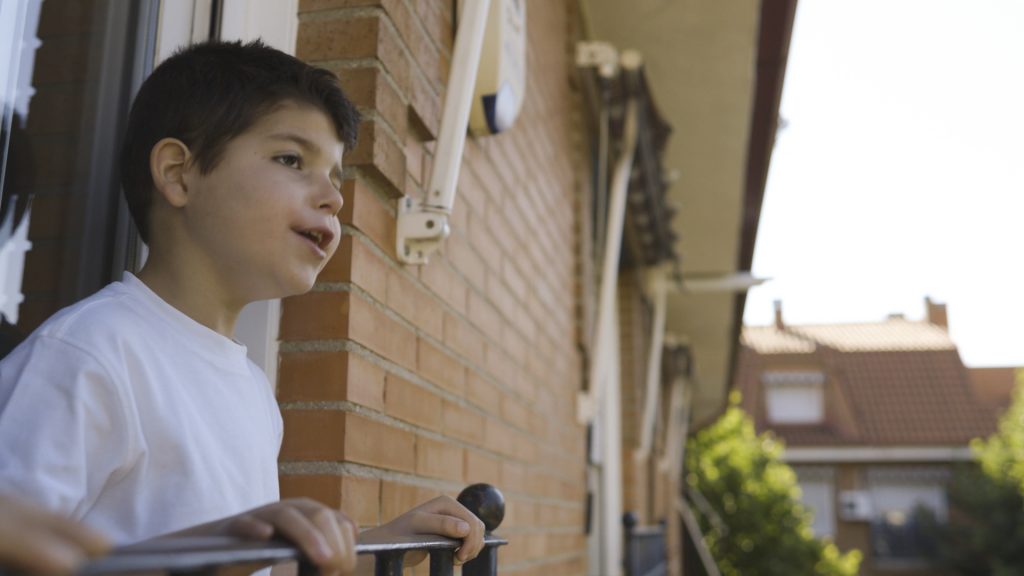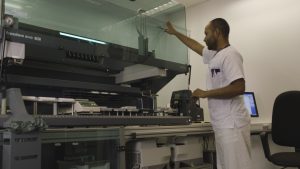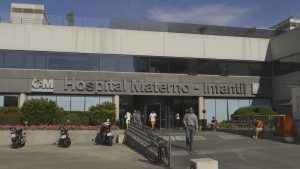
Using the cloud to help diagnose a rare, debilitating childhood disease
There’s perhaps nothing more terrifying than being a parent of a small child, and watching them suffer from a seizure. There is a profound feeling of helplessness witnessing them convulse, not knowing how long it will last—or how much damage will be done.
“What you feel is impotence,” explains Julian Isla, whose son Sergio began having catastrophic epileptic seizures when he was two months old. “You get the feeling that you have to take care of your son, you have to protect him, and you can’t. That feeling of not being able to do anything as a parent, I think is the most painful feeling that a parent can have.”
Sergio suffered from his first seizure in the middle of a Christmas holiday, recalls Isla, who lives with his family in a suburb of Madrid, Spain.
“My wife called me to the bathroom and I could see Sergio having a seizure in there. I had never seen a seizure before, that was the first time ever, and in that moment, no doubt about it, I knew that something was terribly wrong.”
Initially, Sergio had seizures once every two months, but soon they were happening six, seven, eight times a day. One difference between epileptic and febrile seizures, which are caused when a child’s body temperature spikes, is that febrile seizures are over within 2 or 3 minutes. Often, when Sergio had a catastrophic epileptic seizure, his parents had to take him to emergency room care so doctors could induce a coma to stop the seizing, while trying to prevent severe neurological damage.
Isla and his wife were desperate to know what was wrong. The news was not good. At 10-months-old, Sergio was diagnosed with Dravet Syndrome, also known as Severe Myoclonic Epilepsy of Infancy (SMEI), a rare and catastrophic form of intractable epilepsy that begins in infancy and is associated with developmental and cognitive delays, movement and growth issues, and chronic infections, among other debilitating side effects.
Current treatment options are limited and the prognosis for these children is poor, but diagnosis is a critical first step. And like many rare conditions, diagnosing Dravet syndrome is difficult, complicated by the fact that little is known about the genes that cause the disease.
When it came to the diagnosis, Sergio and his family were fortunate. They found out he had Dravet comparatively fast. For some, it takes years. Isla, a senior delivery resource manager at Microsoft, decided to try and do something to help alleviate the gut-wrenching reality of the not-knowing faced by many families.

“The main feeling you get when you face a disease you do not know and do not know the name of is uncertainty,” Isla explains. “Humans need some predictability in our day-to-day, and a disease of this kind that you do not know what it is, and the symptoms that come with it, or what it will produce, creates a lot of uncertainty. And on top of that, there’s the problem that, as a parent, you have a need to care for your child, and failing to do so is a really frustrating feeling.”
Seeking something positive to come out of Sergio’s suffering, his parents vowed to find more Dravet Syndrome patients, help facilitate a quick diagnosis and spare them unnecessary treatments.
Many Dravet Syndrome patients have a mutation in a gene called SCN1A, which prevents the gene from connecting sodium channels, a critical method by which neurons communicate. And if this communication doesn’t occur, seizures result. Researchers begin by combing a patient’s genome for this and other potential genetic abnormalities in a process known as sequencing.

The information in a genetic sequence is massive “because it reads millions of readings, and each of these readings has a length of 150 nucleotides,” explains bioinformatics analyst Juan Carlos Silla.
Genetic sequencing is expensive and time consuming because of the server space required to process and store the results. Instead, these researchers were able to make sense of this virtual mountain of genetic data with the help of the Microsoft Cloud. Using Azure, researchers at La Paz hospital in Spain can detect mutations in more than 200 epilepsy genes and get a diagnosis in a matter of months instead of years. The project was made possible in part because of support from the social department of Spanish Bank.
“This puts the Hospital of La Paz in a privileged position, a pioneering position to be able to use this massive sequencing method ― a real diagnosis tool in a public hospital,” says Pablo Lapunzina, director and coordinator of the Institute of Medical Molecular Genetics at La Paz Hospital. “Nowadays, genomic medicine and personalized medicine are synonyms. It is always related to the necessity of analyzing big quantities of data, to calculate and save them.”

In just one year, using Microsoft technology, the doctors in Spain were able to successfully diagnose 1,400 patients suffering from Dravet syndrome and other genetic conditions. Lapunzina adds that this solution is easily replicable in other countries around the world. The technique could also be used to help diagnose other rare diseases as well.
“There is a very big opportunity, where massive data storage and high performance computing are necessary. Therefore, there’s a very big opportunity to take this real solution into the broader healthcare arena,” says Gonzalo Die Socias, who manages public sector efforts in Spain for Microsoft.
“Azure turns researchers into talent multipliers,” adds Juanjo Carmena Palazuelo, Microsoft’s Azure representative in the Spanish and Portuguese markets. “They are in the environment where they can really create things without having any limits.”
For Isla, the project, while intensely personal, is also a good example of something he’s heard Microsoft CEO Satya Nadella encourage employees to do: Hack the system, by using the tools Microsoft has to build something even better.

“I really feel privileged to have the coworkers that I do. I did not previously have a special relationship with many of those working on this project, but we were all drawn together by a desire. In my case the pain, and in their case the need for helping, has joined us together,” Isla says.
Sadly, due to complications from the disease, Sergio can’t speak. His father says this causes behavioral problems because Sergio is not able to communicate his feelings. But despite these challenges, Isla believes his son, now 6 years old, is a happy child “who enjoys everything he does.”
“In this company we have the great privilege of changing people’s lives with technology. For patients with rare diseases that are suffering, we have the power to change the way that they live. We can help make their lives better,” Isla says. “I have a complicated life, I have a very sick child, but we have been able to improve the lives of others. We have been able to change the world.”














